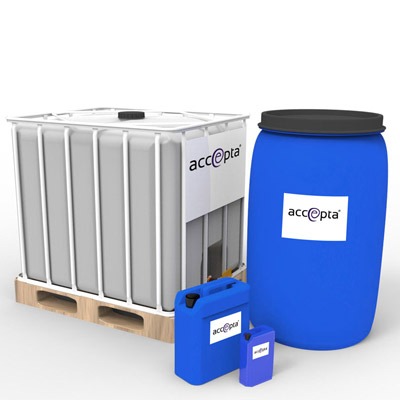Discover the Best Practices for Effective Foam Control in Industrial Applications
A Comprehensive Overview to Applying Foam Control Solutions in Your Workflow
Efficient foam control is a critical aspect of functional effectiveness that usually goes ignored. Comprehending the complexities of foam generation can substantially influence both performance and product quality. By analyzing key variables such as application compatibility and workers training, companies can optimize their foam management initiatives.
Understanding Foam Challenges
Foam obstacles are a substantial worry across various sectors, affecting operational performance and product high quality. The formation of excessive foam can impede procedures such as mixing, transportation, and storage, bring about boosted downtime and waste. In markets like food and drink, drugs, and petrochemicals, foam can hinder manufacturing lines, triggering product inconsistencies and contamination dangers.
Furthermore, foam can block devices functionality, bring about expensive fixings and maintenance. As an example, in wastewater treatment, foam can interfere with clarifier operations, causing lower therapy performance and regulative conformity problems.
Comprehending the underlying reasons for foam generation is crucial for efficient monitoring. Factors such as surfactants, temperature fluctuations, and anxiety degrees can all add to foam production. Recognizing these components enables sectors to execute targeted methods that decrease foam formation while maintaining item stability.
Types of Foam Control Solutions

Mechanical solutions include the use of gadgets such as foam skimmers or defoamers. Chemical remedies, on the various other hand, include the application of defoaming representatives-- substances that disrupt the foam structure, leading to its collapse. Foam Control.
Lastly, operational techniques concentrate on procedure changes. This might entail modifying equipment specifications, such as temperature level and stress, or altering the flow rates of fluids to minimize foam generation. Additionally, carrying out great housekeeping methods can likewise mitigate foam formation by lowering impurities that add to foam security.
Selecting the ideal foam control remedy includes evaluating the certain requirements of the operation, including the kind of procedure, the attributes of the products involved, and safety factors to consider.
Choosing the Right Products
Choosing the best foam control products calls for a thorough understanding of the particular application and its unique obstacles. Elements such as the sort of foam, the atmosphere in which it occurs, and the wanted result all play crucial duties in item choice. Foam Control. For instance, in sectors such as food handling, it is imperative to choose food-grade defoamers that adhere to safety and security policies while effectively managing foam.
Additionally, take into consideration the viscosity of the fluid where the foam problem exists. Some items are created for low-viscosity applications, while others are tailored for thicker liquids. Compatibility with existing processes is one more crucial element; the picked foam control agents ought to incorporate perfectly without interfering with overall operations.
One more critical aspect is the method of application. Some products may call for dilution, while others can be used directly. Analyzing the convenience of use and the needed dose can offer understandings into the item's effectiveness and cost-effectiveness.
Implementation Methods
Successful application approaches for foam control services need a methodical technique that straightens item option he said with functional demands. The very first step entails a complete evaluation of the processes where foam happens, determining particular areas that necessitate intervention. By engaging cross-functional groups, consisting of design, production, and high quality guarantee, companies can gather understandings that notify the choice of the most effective foam control items.
Next, it is vital to develop clear purposes for foam reduction, guaranteeing that these goals are achievable and measurable. This might include defining appropriate foam levels and the timelines for execution. Educating workers on the buildings and application techniques of selected foam control representatives is similarly crucial, as appropriate use is essential for ideal outcomes.
Additionally, incorporating foam control remedies into existing process needs mindful preparation. Eventually, a well-structured method will improve operational efficiency while successfully managing foam-related challenges.
Surveillance and Assessing Performance
Surveillance and evaluating the effectiveness of foam control options is important for making certain that executed techniques produce the preferred outcomes. This procedure entails organized information collection and evaluation to assess the performance of foam control agents and methods. Secret performance signs (KPIs) must be developed prior to implementation, enabling a clear standard against which to determine development.

Assessing efficiency likewise needs routine reviews of foam control procedures and agent efficacy. This can be completed via sampling and screening, permitting drivers to establish if existing remedies are meeting functional demands. Furthermore, it is vital to get comments from staff member that engage with these systems daily, as their understandings can expose functional subtleties that measurable information may forget.

Eventually, an organized surveillance and evaluation framework aids recognize essential changes, guaranteeing that foam control options stay efficient, affordable, and aligned with organizational goals.
Verdict
In final thought, effective foam control remedies are important for maximizing functional efficiency and keeping product top quality. A complete understanding of foam obstacles, incorporated with the selection of proper products and application strategies, promotes the successful administration of foam generation.
Implementing great housekeeping techniques can also minimize foam formation by minimizing impurities that contribute to foam stability.
Picking the right foam control items requires an extensive understanding of the specific application and its distinct obstacles (Foam Control).Effective application techniques for foam control solutions call for a systematic strategy that lines up item selection with operational requirements.In verdict, reliable foam control solutions are crucial for optimizing operational efficiency and keeping item top quality. A complete published here understanding of foam obstacles, combined with the selection of appropriate items and execution approaches, facilitates go to these guys the successful administration of foam generation